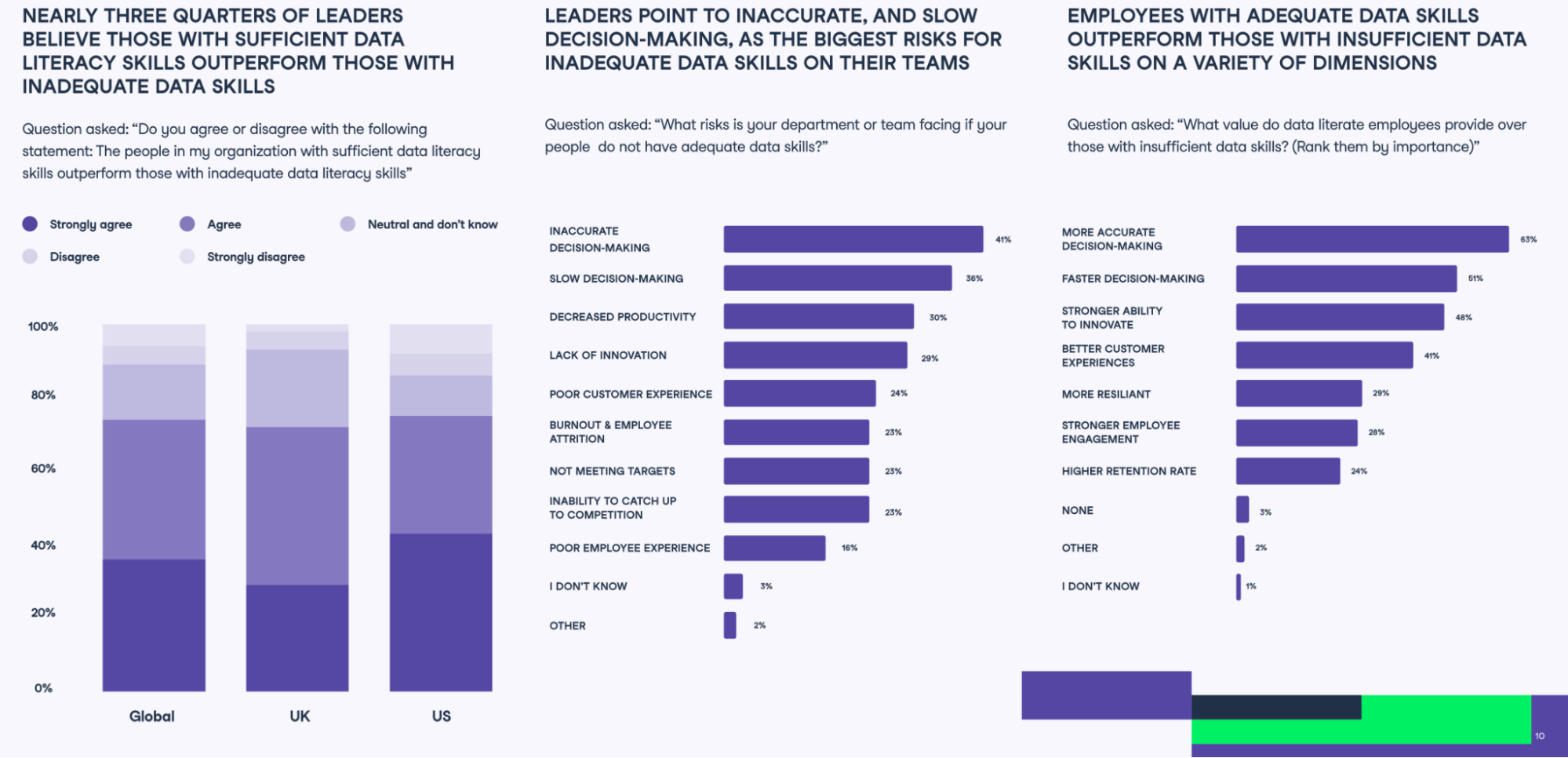Closing the Data Literacy Gap: Key Insights from the State of Data Literacy 2023 Report
Explore the growing importance of data literacy, insights from the State of Data Literacy 2023 Report, and best practices for implementing data literacy programs.
May 2023 · 7 min read
Download the State of Data & AI Literacy Report 2024
Uncover what 550+ leaders in the US & UK believe about the state of their teams’ data & AI skills.
Empower Your Team with Data Literacy
Enhance your team's data literacy and decision-making capabilities with DataCamp for Business. Access diverse courses, hands-on projects, and centralized insights for teams of 2 or more.
Training 2 or more people? Check out our Business solutions
Get your team access to the full DataCamp library, with centralized reporting, assignments, projects and more
RelatedSee MoreSee More
blog
Introducing The State of Data Literacy Report 2023
Explore the key takeaways from our State of Data Literacy report, including essential stats, insights, and opinions from business leaders.
Matt Crabtree
5 min
blog
Overcoming Top Challenges in Data Upskilling: Insights from the State of Data Literacy 2023 Report
Explore insights from the State of Data Literacy 2023 Report, revealing top challenges in data upskilling and actionable strategies to create a data-literate workforce.
Adel Nehme
8 min
blog
Why is Data Literacy Important? The Top 10 Data Literacy Stats for 2023
Discover the importance of data literacy as highlighted in the key stats from our State of Data Literacy Report 2023.
Matt Crabtree
7 min
blog
Introducing The State of Data & AI Literacy Report 2024
Explore the key takeaways from the 2024 State of Data & AI Literacy report, including key statistics and opinions from data & AI thought leaders
DataCamp Team
3 min
blog
Boosting Learner Engagement for Data Upskilling Programs: A Comprehensive Guide
Discover how to boost learner engagement in data upskilling programs with actionable strategies from the 2023 State of Data Literacy Report.
Adel Nehme
5 min
blog
The Future of Data Literacy: A Fundamental Skill Shaping Society
Uncover the role of data literacy in the 21st century.
Matt Crabtree
7 min


